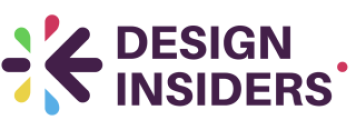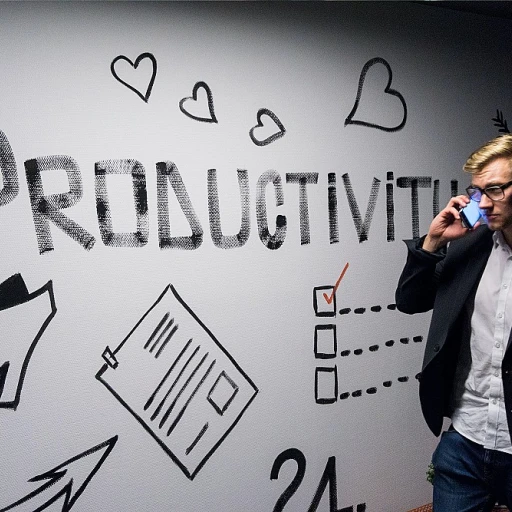
Understanding the Creative Process
Exploring the Core of Creativity
In the realm of design, creativity serves as the lifeblood for innovative solutions and captivating visuals. Understanding the creative process is paramount for any design team aiming to push the boundaries of their craft. However, creativity is not a one-size-fits-all phenomenon; it thrives on diverse inputs and adaptive processes.
At its core, the creative process in design can be broken down into a series of stages. Whether you're brainstorming initial ideas or refining final details, each step offers opportunities for innovation and unique expression. Recognizing these phases helps in maintaining a structured yet fluid approach to design challenges.
Moreover, fostering an environment that encourages open-minded exploration can greatly enhance your team's creativity. Providing the right framework facilitates not only problem-solving but also the ability to generate groundbreaking ideas.
For those seeking to dive deeper into personalizing the design process, you can explore the art of personalization in design. This examines how tailoring design elements can transform routine workflows into highly innovative journeys.
Overcoming Creative Blocks
Unlocking Potential Through Creative Challenges
Creativity often flourishes when faced with obstacles, yet many teams encounter hurdles that stall their innovative efforts. Overcoming these challenges requires understanding and employing strategies to unblock creativity.
One effective method is encouraging open dialogue within your team. Creating a safe space where everyone can express their ideas without judgment fosters a supportive environment and is pivotal in sparking creativity. Directly addressing any underlying issues that might be inhibiting creativity—such as fear of criticism or internal conflicts—can also help in overcoming creative blocks.
Moreover, rotating team roles or introducing new techniques can help break patterns that lead to stagnation. For instance, brainstorming sessions or design sprints can inject fresh energy, disrupting monotony and sparking new ideas. Importantly, ensuring your team has access to resources like inspiring stories or examples of creative problem-solving from other projects can provide invaluable guidance and inspiration.
In today's digital landscape, the role of a UX consultant in modern design can be crucial. They bring a wealth of knowledge on user-centric design approaches that often pave the way for breakthrough creative insights. By collaborating with such professionals, teams can learn to view challenges as opportunities for innovation rather than roadblocks.
Finally, regular feedback is essential for creative growth. Constructive critique accompanied by actionable suggestions can guide teams in refining their ideas, ultimately leading to more sophisticated and inventive solutions. In this way, overcoming creative blocks becomes an ongoing journey that enhances a team's design capabilities.
Incorporating Diverse Perspectives
Embracing Varied Viewpoints for Enhanced Creativity
In the world of design, embracing diverse perspectives is crucial for stimuler creativite. When team members come from different backgrounds, they bring unique experiences and ideas that can lead to innovative solutions. This diversity is not just about demographics; it includes different ways of thinking, problem-solving approaches, and life experiences.
One effective way to incorporate diverse perspectives is through collaborative activities that encourage team members to share their ideas openly. Activities help in breaking down barriers and fostering an environment where everyone feels confident to contribute. This can be as simple as regular brainstorming sessions or more structured workshops designed to tackle specific design challenges.
Moreover, letting team members explore various sources inspiration can significantly boost their creativity. Encourage them to read des livres outside their usual scope or attend events that are not directly related to design. Such exposure can spark new ideas and lead to creative breakthroughs.
Another aspect to consider is the role of children in inspiring creativity. Observing how children play and solve problems can offer fresh insights into creative thinking. Their uninhibited approach to fun and exploration can remind us of the importance of play in the creative process.
Incorporating diverse perspectives not only enhances creativity but also builds a more inclusive and supportive team environment. This approach aligns with the broader understanding of the creative process and helps in overcoming creative blocks by offering new angles to consider. For more insights on how real-world examples can enrich your design process, explore this article.
The Role of Environment in Creativity
Creating a Creative Environment
To stimulate creativity within a design team, the environment plays a crucial role. The ambiance of your workspace can directly impact the team's ability to think outside the box and produce innovative solutions. Here's how you can create an environment that fosters creativity:- Flexible Workspaces: Encourage movement within the office by creating flexible workspaces. These can include areas for collaboration and individual work, allowing team members the freedom to choose a setting that best suits their current task.
- Inspiring Decor: Surround the team with motivational quotes or artwork that reflects your brand values and creative ethos. Visual stimulation can ignite fresh ideas and nurture an innovative mindset.
- Outdoor Inspiration: If possible, integrate elements of nature into the workspace. Access to natural light, plants, or an outdoor area can help reduce stress and increase focus.
- Noise Management: While some people thrive in a bustling environment, others may need quiet spaces to concentrate. Provide noise-canceling headphones or soundproof areas to cater to individual preferences.
Leveraging Technology for Creative Innovation
Technology as a Catalyst for Design Creativity
In today's fast-paced digital world, technology plays an indispensable role in fostering creativity within design teams. The right tools can amplify innovation, streamline processes, and open new avenues for exploration. By capitalizing on the latest technological advancements, design teams can break free from traditional restraints and explore the full extent of their creative potential.
To truly harness the power of technology for creative innovation, consider the following strategies:
- Adopt Cutting-edge Design Tools: Software solutions continue to evolve, offering designers more options than ever. Advanced software not only boosts efficiency but also enhances the creative process significantly. Platforms like AI-based design tools can automate routine tasks, allowing designers to focus on more innovative aspects of their projects.
- Explore Collaborations with Virtual Reality (VR) and Augmented Reality (AR): These technologies offer unique experiences that can fuel creativity. By simulating different environments or overlaying digital content in real-world settings, designers can experiment with designs in ways previously unimaginable.
- Embrace Automation and Artificial Intelligence (AI): AI can analyze large datasets and uncover insights that may inspire creativity. This data-driven approach can lead to more informed design decisions and push boundaries in ways that might not occur through conventional methods.
- Leverage Online Design Communities: Online platforms and communities provide a wealth of inspiration, feedback, and collaboration opportunities. Engaging with these communities can spark creativity and provide invaluable insights from a diverse range of perspectives.
The marriage of technology and creativity is a testament to the endless possibilities that await once traditional barriers are removed. By embracing innovations and continuously exploring new tools, design teams can not only enhance their creativity but also redefine what’s possible in the creative landscape.
Ultimately, the challenge lies in selecting the right technological tools that align with your team's specific needs while fostering an environment conducive to creative growth.
Mindfulness and Its Impact on Creativity
Embracing Mindful Practices to Enhance Creativity
Incorporating mindfulness in your design team's routine can significantly impact creativity and innovation. Mindfulness is more than just meditation sessions; it involves cultivating an awareness of the present moment and fostering a non-judgmental acceptance of thoughts and feelings. This conscious practice can help designers break free from creative blocks by promoting mental clarity, reducing stress, and increasing focus. Mindfulness also enables designers to immerse themselves fully in the creative process, leading to more authentic and original outputs. When designers are present, they're more likely to engage deeply with the task at hand, allowing for unique ideas to flourish. Additionally, a team that practices mindfulness is often more adaptable and open to diverse perspectives, as they learn to listen actively and empathize with colleagues, enhancing collaborative efforts. To incorporate mindfulness into your team's routine, consider the following strategies:- Daily Use of Mindful Breathing Techniques: Encourage short breathing exercises to reduce stress and foster focus before brainstorming sessions.
- Implement Mindful Breaks: Introduce regular breaks during the workday where team members can practice mindfulness, whether through guided meditations or simple stretching.
- Encourage Reflection: Allocate time for team members to reflect on their creative process, which can facilitate problem-solving and generate new ideas.
- Create a Supportive Environment: Foster an atmosphere that values openness and emotional safety, where team members feel comfortable sharing insights and challenges.







